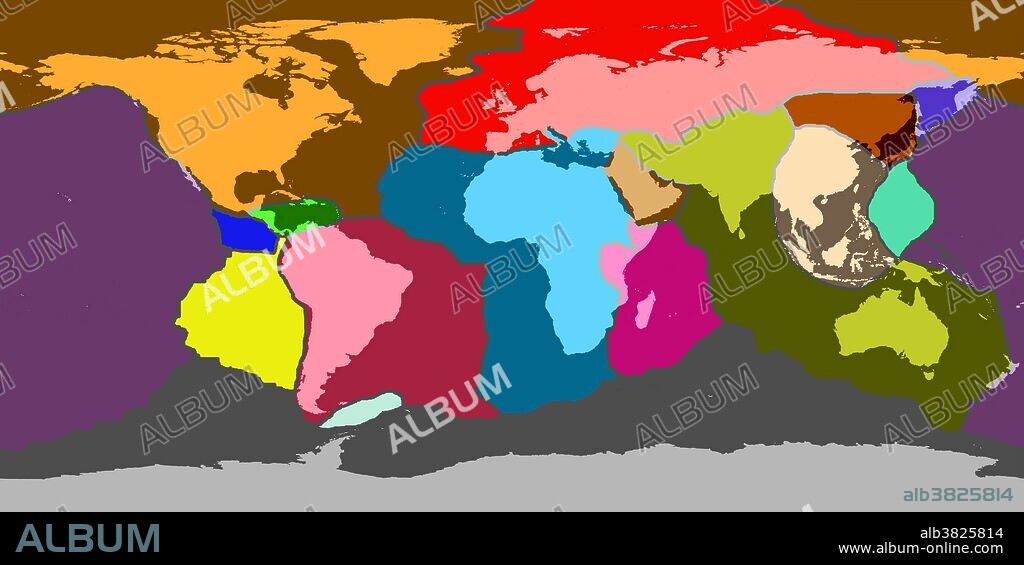alb3825814
Earth's Tectonic Plates

|
Ajouter à une autre Lightbox |
|
Ajouter à une autre Lightbox |



Avez-vous déjà un compte? S'identifier
Vous n'avez pas de compte ? S'inscrire
Acheter cette image

Titre:
Earth's Tectonic Plates
Légende:
Voir la traduction automatique
Earth's tectonic plates. The Earth's surface is divided up into several major plates. These are rocky slabs that float and move on the more fluid layer beneath them. The boundaries between plates are geologically active areas where the majority of the world's volcanoes and earthquakes occur. Plate tectonics, the study of the plates, has revealed a huge amount about the Earth. For instance, South America's east coast appears to fit into Africa's west coast because they were once joined; the plates that hold them are moving apart. Also, where the Indian plate collided with the Eurasian plate, the Himalayas were formed. The seven major plates shown here include the Pacific Plate (dark purple), North American Plate (orangey-brown), African Plate (blue), Eurasian Plate (red), South American Plate (pink), Indo-Australian Plate (olive green), and the Antarctic Plate (grey). Some other plates include the Arabian Plate (brown), Nazca Plate (yellow), Cocos Plate (cobalt), Caribbean Plate (bright green) Scotia Plate (off-white), Philippine Plate (turquoise), Somali Plate (bright purple), Indo-Chinese Plate (greyish-brown), Amur Plate (dark brown), and the adjacent Okhotsk Plate (purplish-blue).
Crédit:
Album / Science Source / Jessica Wilson/NASA
Autorisations:
Modèle: Non - Propriété: Non
Questions sur les droits?
Questions sur les droits?
Taille de l'image:
4500 x 2250 px | 29.0 MB
Taille d'impression:
38.1 x 19.1 cm | 15.0 x 7.5 in (300 dpi)
Mots clés:
 Pinterest
Pinterest Twitter
Twitter Facebook
Facebook Copier le lien
Copier le lien Email
Email
